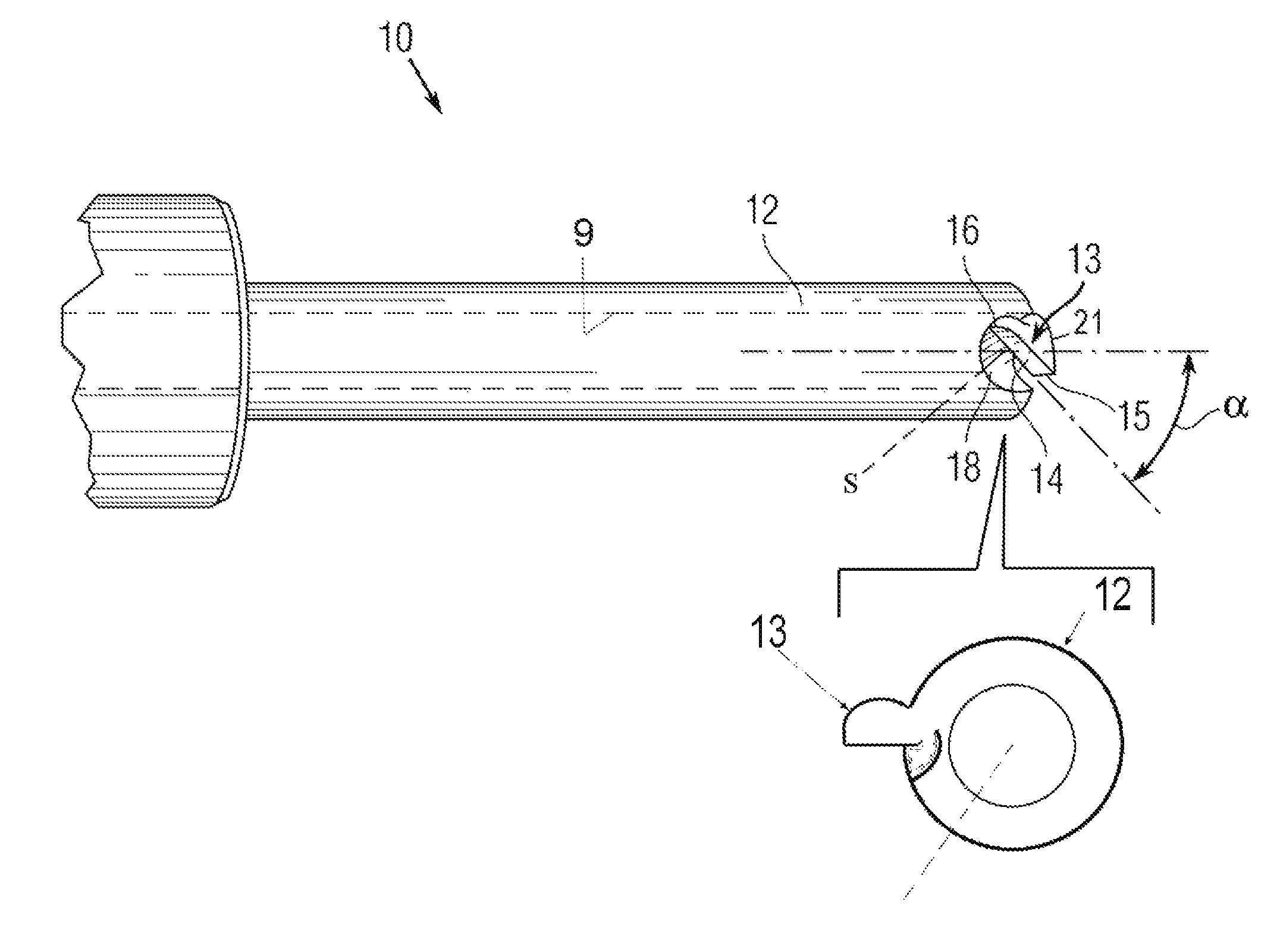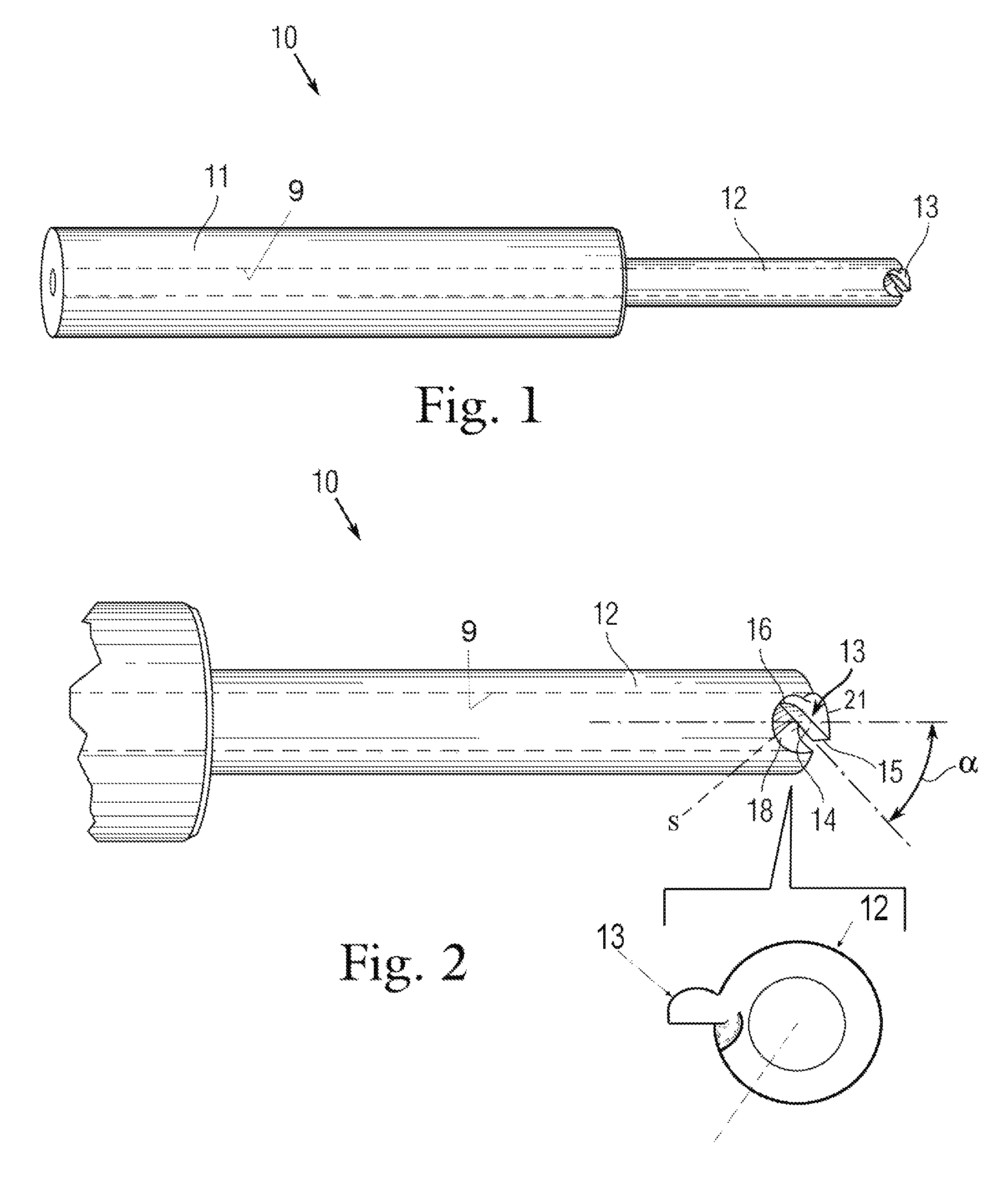Device for stripping sheathing on unbonded post-tensioning tendons
a technology of post-tensioning tendons and sheathing, which is applied in the direction of earthwork drilling, mining, metal working equipment, etc., can solve the problems of u-shaped design, impede clamping ability, and inability to fully spiral cut or remove excess sheathing, etc., to achieve convenient rotation of the device, strong blade configuration, and easy rotation
- Summary
- Abstract
- Description
- Claims
- Application Information
AI Technical Summary
Benefits of technology
Problems solved by technology
Method used
Image
Examples
Embodiment Construction
[0025]The present invention is a device for cutting and removing sheathing from a sheathed tendon during the post-tensioning process. In an embodiment, the device comprises a tubular body of uniform diameter attached to a tubular cutting head. The cutting head has a smaller diameter and is concentric with the tubular body. The cutting head is sized to fit within the wedge pocket of an anchor collar or “stressing anchor.” The body and cutting head have a through bore along their common longitudinal axis. The cutting head has a blade protruding radially from the distal edge, the blade having a planar cutting face radially offset from the tendon and angled at a pitch angle between 45 and 85 degrees from the longitudinal axis of the body. In use, the device is slipped over the stressing tail of the tendon until the cutting head engages with the sheathing to be cut. As the body is rotated causing the cutting head to turn about the tendon, the blade cuts a helical path through the entire ...
PUM
| Property | Measurement | Unit |
|---|---|---|
| pitch angle | aaaaa | aaaaa |
| pitch angle | aaaaa | aaaaa |
| transverse angle | aaaaa | aaaaa |
Abstract
Description
Claims
Application Information
 Login to View More
Login to View More - R&D
- Intellectual Property
- Life Sciences
- Materials
- Tech Scout
- Unparalleled Data Quality
- Higher Quality Content
- 60% Fewer Hallucinations
Browse by: Latest US Patents, China's latest patents, Technical Efficacy Thesaurus, Application Domain, Technology Topic, Popular Technical Reports.
© 2025 PatSnap. All rights reserved.Legal|Privacy policy|Modern Slavery Act Transparency Statement|Sitemap|About US| Contact US: help@patsnap.com



